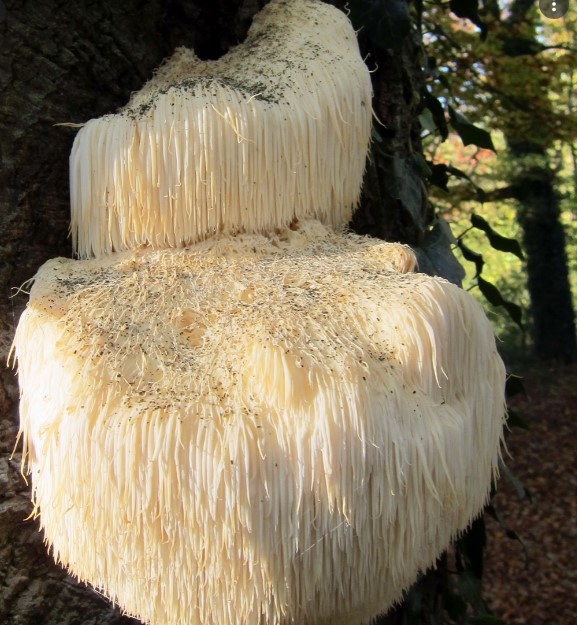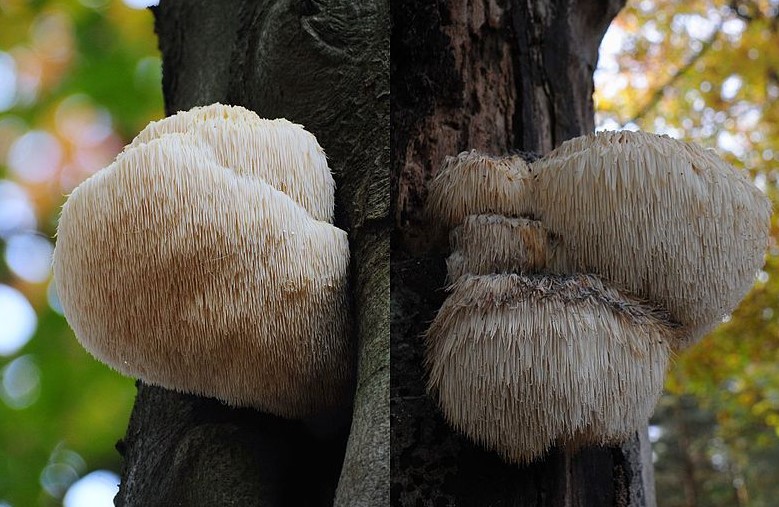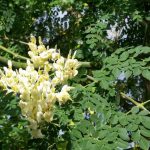Hericium erinaceus, also known as Lions Mane, is a medicinal mushroom that has been used for centuries in Asia for its cognitive and nutritional benefits. It is now gaining popularity in the west as a dietary supplement due to its high levels of antioxidants and polysaccharides. Hericium erinaceus can be grown at home using either spawn or spores.
Spawn is a substrate that has been inoculated with the mycelium of a mushroom. It can be purchased from online retailers or your local health food store. Spores are the reproductive cells of mushrooms and can be collected from wild mushrooms or obtained from a spore bank.
To grow hericium erinaceus using spawn, you will need: a grow kit, spawn, a growing container, and perlite or vermiculite. The grow kit will come with all of the necessary instructions. Spawn can be inoculated into the growing container using one of two methods: direct injection or pasteurization. Direct injection is the most common method and involves inoculating the spawn into the growing substrate with a needle. Pasteurization is a more involved process that involves heating the substrate to a specific temperature for a set amount of time in order to kill any potential contaminants.
Once you have your growing container filled with substrate and spawn, it is important to keep the moisture level high. This can be done by misting the substrate regularly or placing the container in a humidity chamber. Hericium erinaceus requires a temperature of 60-70 degrees Fahrenheit and will fruit in 4-8 weeks.
When the mushroom is ready to harvest, cut it at the base of the stem with a sharp knife. The mushroom can then be dried, frozen, or cooked and eaten immediately. Hericium erinaceus has a variety of culinary uses and can be added to soups, stir-fries, or used as a meat substitute.
Growing your own hericium erinaceus at home is a great way to get all of the benefits of this medicinal mushroom without having to purchase it from a store. With a little bit of effort, you can have a continuous supply of hericium erinaceus to use in your kitchen and improve your health.
Table of Contents
How to grow Hericium Erinaceus in the forest
Hericium erinaceus, also known as the lion’s mane mushroom, is a medicinal and edible mushroom that has been used in Traditional Chinese Medicine for centuries. This mushrooms grows best in cool, damp, shaded areas with plenty of organic matter. Lion’s mane mushrooms are easy to grow and can be cultivated using a variety of methods.
To grow hericium erinaceus in a forest, you will need:
- A shady, moist location in the forest with plenty of organic matter.
- Spawn or mycelium culture of hericium erinaceus. You can purchase this from a reputable supplier online or at your local farm supply store
- A log or stump that is at least 12 inches in diameter and has been freshly cut
- Drill or auger
- Hammer
- Chisel
- Saw
- Soil
- Mulch
Select a shady, moist location in the forest with plenty of organic matter. Hericium erinaceus grows best in cooler climates with high levels of humidity.
- Obtain spawn or mycelium culture of hericium erinaceus from a reputable supplier. You can purchase this online or at your local farm supply store.
- Use a drill or auger to make several 1-inch diameter holes in a log or stump that is at least 12 inches in diameter and has been freshly cut.
- Use a hammer and chisel to whittle away the bark around the holes so that the spawn can easily be inserted into the wood.
- Insert the spawn or mycelium into the holes using a spoon or your fingers. Pack it in tightly.
- Saw off the excess spawn from around the drilled holes using a saw.
- Apply a thin layer of soil over top of the spawn-filled holes.
- Mulch over top of the soil with leaves, needles, or straw to help keep it moist.
- Keep the area well-watered and shaded for at least one year while the mushrooms grow. You may need to water more frequently during hot, dry weather conditions.
- After one year, you can begin harvesting your mushrooms. Cut them at the base of the stem with a sharp knife. Allow the mushrooms to regenerate by allowing some of the fruiting bodies to remain on the log or stump. The mushrooms will regenerate and you can continue to harvest them for several years.,
Economics of commercially growing Hericium Erinaceus
The economic viability of commercial cultivation of hericium erinaceus is determined by a number of factors, including the price of the mushroom, production costs, and demand. In general, the higher the price of the mushroom, the greater the incentive to cultivate it commercially. Production costs include expenses such as labour, energy, and raw materials used in production. Generally, the lower the production costs, the more likely it is that a business will be profitable. Finally, demand for a product is an important factor in determining its commercial viability. If there is high demand for a product and prices are high, then businesses are more likely to be successful in cultivating it commercially.
All things considered, cultivating hericium erinaceus commercially can be a profitable endeavour, provided that the right conditions are in place. However, it is important to remember that these conditions can change over time, so businesses need to be flexible and adaptable in order to continue to be successful.
Hericium erinaceus, or Lion’s Mane, is a type of mushroom that has been used medicinally in Asia for centuries. It is now gaining popularity in the West for its potential health benefits.
Lion’s Mane is a nutrient-rich mushroom that is high in protein and fiber. It also contains antioxidants and polysaccharides, which are believed to promote immune system health. Additionally, Lion’s Mane is thought to improve cognitive function and memory.
Studies on Lion’s Mane are still preliminary, but the early evidence suggests that this mushroom may offer some health benefits. For example, one study found that Lion’s Mane improved cognitive function in participants with mild cognitive impairment.









